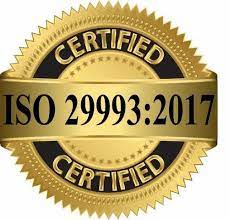
|
|
Finally, the American economy was more closely intertwined with the global economy than it ever had been. Clinton and Gingrich, like their predecessors, had continued to push for elimination of trade barriers. A North American Free Trade Agreement (NAFTA) had further increased economic ties between the United States and its largest trading partners, Canada and Mexico. Asia, which had grown especially rapidly during the 1980s, joined Europe as a major supplier of finished goods and a market for American exports. Sophisticated worldwide telecommunications systems linked the world's financial markets in a way unimaginable even a few years earlier. While many Americans remained convinced that global economic integration benefited all nations, the growing interdependence created some dislocations as well. Workers in high-technology industries -- at which the United States excelled -- fared rather well, but competition from many foreign countries that generally had lower labor costs tended to dampen wages in traditional manufacturing industries. Then, when the economies of Japan and other newly industrialized countries in Asia faltered in the late 1990s, shock waves rippled throughout the global financial system. American economic policy-makers found they increasingly had to weigh global economic conditions in charting a course for the domestic economy. Still, Americans ended the 1990s with a restored sense of confidence. By the end of 1999, the economy had grown continuously since 1994, the longest peacetime economic expansion in history. Unemployment totaled just 4.1 percent of the labor force in November 1999 and has on average even been lower in between 2003-2007. Rebounding from the “Stock Market Bubble” and recession of the late 90’s was a challenge, but the American Economy moves forward.. Many challenges lay ahead, but the nation had weathered the 20th century -- and the enormous changes it brought -- in good shape. http://usinfo.state.gov/products/pubs/oecon/chap12.htm Project Management
|
| ||||||||||||
Home Home Certifications AMC® Training Council Continuing Ed Awards Careers Board Government Jobs Membership Ethics Handbook Events Benefits Exam Sample Omicron Chi News Accredited Degrees Management Degrees Accounting Degrees Financial Analyst Degrees Human Resource Degrees Application Links Disclaimer
The NAMC NATIONAL ACADEMY OF MANAGEMENT CONSULTANTS is a registered Nonprofit Association USA.
All Rights Reserved 1996-2023 - IBS LLC International Board of Standards -
Accreditation and Certification - Global Certified Political Analysts Institute
International Management Consulting Foregin Relations Public Policy
Council - IMCB All Rights Reserved IBS LLC -

| |||||||||||||

